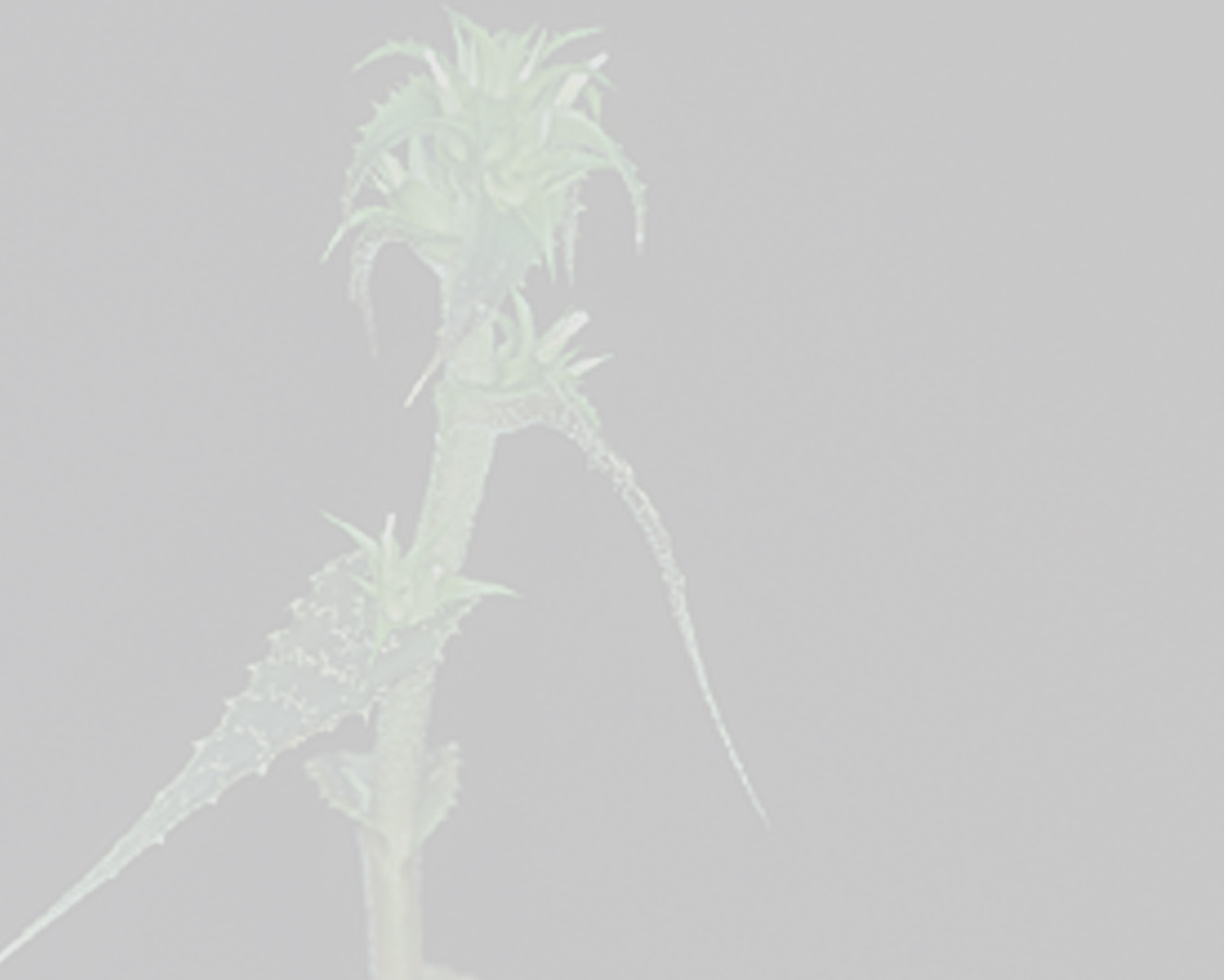

 Orthophytum amoenum (Ule) L.B.Sm.[as Orthophytum amoenum (Ule) Smith]
Orthophytum amoenum (Ule) L.B.Sm.[as Orthophytum amoenum (Ule) Smith]Observations: —By Wanderley and Louzada
Orthophytum amoenum has similarities with O. navioides, however the leaves of O. amoenum are wider and shorter and strongly coriaceous, with conspicuous and scattered thorns. The coloration of the leaves in the flowering period also contributes to this recognition. In Orthophytum navioides the leaf blades just have a red base, delimiting the inflorescence in contrast to the remainder of the green rosette. On the other hand, O. amoenum has a gradient of colours in the flowering period, with the leaves becoming completely vinaceous and lucid or with rose or red base, forming a impressive halo around of the inflorescence, at the base of the rosette. For the floral characteristics these two species are recognized easily, being sublinear-spatulate petals in O. amoenum and lineal-spatulate in O. navioides. The two species also stand out as to habitat where O. navioides occurs in more shaded places, on rocks at the edge of river waterfalls. On the other hand, O. amoenum is heliofilic, inhabiting areas typical of rupestral fields, on rocks or in stony soil, forming groups with a small number of individuals, differing from O. navioides that forms dense groups.
The taxonomic study of Orthophytum amoenum demanded great attention to detail because this was the name attributed to several different herbarium specimens. This is due, partly, to the morphologic variability of this taxon, as well as for being known previously just from the type collection material, coming from Serra do Sincora. With this necessary location the difficulty became even larger, because the name Serra do Sincora can be considered in the wider sense to be Chapada Diamantina.
During expeditions to the area of Chapada Diamantina, complementing previous expeditions that had been accomplished seeking taxonomic studies of the genus Orthophytum, examination of various collections for different herbaria, it was possible to discover the identity of this species. New recordings for the same species were made at Morro do Pai Inacio, located in the municipal district of Palmeira, in Bahia. Other older herbarium specimens were observed as having been identified as O. navioides were in fact O. amoenum. With the increase in collections, the study of the populations in the natural environment and of collections maintained in cultivation, it was possible, in the present work, to enlarge the description of O. amoenum.
BRAZIL. Bahia: Palmeira, Morro da Mãe Inacia, Lenqois and Mucuge.Edited from (14-11-2014): Wanderley & Louzada 2009. Delimitação Morfológica E Reconhecimento De Orthophytum Amoenum (Ule) L.B.Sm. (Bromeliaceae) .